
We go to Mumbai, India, for an update on the state of crisis in the country as COVID-19 cases surge and hospitals run out of oxygen. India recently recorded 315,000 new cases in a single day, the highest daily toll in any country since the start of the pandemic, but Prime Minister Narendra Modi has continued to hold large campaign rallies. Public health experts have blamed the surge on a number of factors, including the government’s reluctance to impose another round of lockdowns, the spread of a double mutant variant of the virus, a recent Hindu festival attended by millions, and a slow vaccination drive. India has led efforts to force Big Pharma to waive patent rights on COVID-19 vaccines, but the United States and other wealthy nations have blocked such a move at the World Trade Organization. “It is an apocalyptic situation in India right now,” says journalist Rana Ayyub. “Clearly, we have not learned our lessons from the pandemic last year.”
Transcript
AMY GOODMAN: India is in a state of crisis as COVID cases surge and hospitals run out of oxygen. India recorded 315,000 new cases Thursday, the highest daily toll of any country since the start of the pandemic. India also recorded 2,100 deaths, India’s highest daily death toll so far. Overall, its official death toll is about 185,000, but the true toll is believed to be far higher. Hospitals in New Delhi and other cities report they have run out of oxygen. Crematoriums have been overwhelmed with bodies.
Despite this, India’s Prime Minister Narendra Modi has continued to hold large campaign rallies. The phrase “Modi-made disaster” has been trending on Twitter. Public health experts have blamed the surge on a number of factors, including the government’s reluctance to impose new lockdowns, the spread of a double mutant variant of the virus, a recent Hindu festival attended by millions, and a slow vaccination drive.
India has led efforts to force Big Pharma to waive patent rights on COVID vaccines, but the United States and other wealthy nations have blocked such a move at the World Trade Organization.
In a moment, we’re going to speak with a Texas doctor who’s attempting to get cheap vaccines distributed to India and around the world. But right now we go to Mumbai, where we’re joined by the Indian journalist Rana Ayyub. She is a global opinions writer for The Washington Post.
First, we’d like to express our condolences, Rana, for your losses. You’ve had loved ones who have died from COVID-19 recently. You’ve described the situation as “apocalyptic.” So we’re so sorry for your loss. If you can talk about what’s happening in India, what’s even happened to your family, and what accounts for this unprecedented surge in your country?
RANA AYYUB: Thank you, Amy. Thank you for having me on your show, and thank you for your wishes. And thank you, Nermeen.
It is an apocalyptic situation in India right now. It’s heartbreaking not just to be a citizen of this country, but it’s heartbreaking to be a journalist who’s bearing witness to the events that are unfolding in India, especially with the number of COVID deaths that we are witnessing, and many of them in their early thirties. The two friends that I lost were in their mid-thirties. Their families are still in the ICU. Yesterday, 22 patients lost their lives at one go in a hospital after a tank that was providing oxygen to the ventilators leaked for 30 minutes. And all 22 patients lost their lives in the span of an hour.
And there is — I mean, it’s like this country is breathless. On Twitter, in hospitals, whenever I’m going to report, everybody is begging for oxygen. As I’m talking, hospitals after hospitals in the national capital, not far from the prime minister’s residence, are petitioning the High Court of the country to tell them that we have no oxygen left in our hospitals. State governments are accusing each other of oxygen theft, that they are stealing each other’s oxygen tankers. It’s that kind of a situation. An investigation done by news website Scroll, Daily Post, suggested that the government of India had invested billions of rupees from the prime minister — the PM CARES Fund for setting up 162 oxygen plants. And so far, only 33 such plants have been functional in India.
So, clearly, we have not learned our lessons from the pandemic last year, when a lockdown was announced and there was a migrant exodus. The situation in India right now is apocalyptic because the visuals are searing. I just wrote about the story of this young woman who was in her mid-thirties, who had been wanting to have a child for 17 years. She gave birth to twin daughters. And within hours, she died, because she was COVID-positive and there was no oxygen in the hospital. So, that’s the level of devastation that we are seeing. Patients’ families are carrying their patients on handcarts and stretchers and carrying oxygen cylinders and begging for them on social media. And we’re still talking about the privileged section, Amy; we are not even talking about rural India, from which there is so much underreporting, and we don’t know how many deaths are being unreported in rural India.
NERMEEN SHAIKH: Rana, could you talk — you’ve said a little bit about why this latest wave is so devastating. But could it have been anticipated, given the fact that the last — when the pandemic began in India, it was not as widespread? And can you talk in particular about the variant, the newest variant, of COVID-19 that we know of, which originated in the Maharashtra, in the state in which you are right now?
RANA AYYUB: So, Nermeen, the B.1.617 strain, which has been detected in India in four different states, in Maharashtra, in West Bengal, is responsible for the higher rate of infections. This was first detected in October, and it’s been linked to the higher rate of infection, but they’re not very sure if it is linked to the severity of the cases. Experts in epidemics have told me that it is the reason that the infection is spreading at such a high rate. It is impacting a lot of young and middle-aged population, and which is why they’re losing their lives.
Now, the strain was first discovered in the month of October through genome sequencing of a sample in the country. Now, if the government of India had spent some resources and we had adequate genome sequencing, we could have possibly avoided the situation. But that’s the problem with this government. Despite the fact that we had a crucial year in 2020, when we lost so many lives, they slip into this complacency. We had various Cabinet members thanking prime minister for, in a way, eradicating the virus from India, while it was still very much present. People were not wearing masks. Our clubs, our gymkhanas were open. People were walking on the streets without their masks. So, this — we were waiting for this to happen, plus the fact that the government did nothing, learned no lessons from the fact that our hospitals, our healthcare infrastructure had collapsed. And despite that — and this was something that we discovered last year, too — despite the fact our hospitals do not have enough intensive care units, beds, we do not have enough ventilators, the government has not had a great vaccination program rolled out.
So, I think, everything coming together, this is criminal abdication of responsibility by the Indian government, not learning its lessons from 2020, which is why we have such a crisis of oxygen supply, we have a crisis of hospital beds, and we have patients dying. And direct responsibility, I think, is with the prime minister of this country, who completely abdicated his responsibility in a country of 1.3 billion people.
NERMEEN SHAIKH: And can you say, Rana, what the response in the country has been to the fact that, in addition to what you point out as the failings of the Modi government, he has also himself held massive public rallies even as cases have been going up? How have people in India, how are the media and others whom you’re speaking to, how have they responded to what the prime minister has been doing?
RANA AYYUB: Well, Nermeen, I think last year the media was pretty proactive in calling the COVID virus the Talibanized virus in India, because some Muslims were part of a religious congregation when there were barely 500 cases in India. This year, in the beginning of the year, in March, when there were millions of cases in India, the prime minister gave sanction to the Kumbh Mela, which is a Hindu religious festival where millions of Hindu devotees were in the north of India taking a dip in the Ganges. And that has been the single source of spreading the virus. And despite that, the Indian media is pretending that it did not exist. There’s not a single critical report on the Kumbh Mela, which was sanctioned by the prime minister. The prime minister of the country has front-page advertisements in newspapers welcoming the Kumbh Mela devotees.
As far as he himself is concerned, it looks like there are two different realities in India: one reality, which is also playing out on our social media, where people are begging each other and asking each other to amplify help for oxygen and hospital beds; there is another India where the prime minister and the home minister are holding massive rallies, massive election rallies, in which thousands of people are seen following him in road shows without wearing a mask. And it’s, I mean, the level of insensitivity which has been displayed by the prime minister, and the fact that no mainstream Indian media is still willing to question. They are talking about — they are talking about reports from hospitals. They’re talking about deaths due to oxygen. They’re talking about the distress in our crematoriums that the number of deaths has gone up significantly higher. But none of them is naming the prime minister. None of them is questioning the prime minister. The prime minister has still to hold a single press conference to take a single question from the Indian media. So, this is complete abdication of responsibility not just by the prime minister, but also by the Indian media, except for a few channels, except for a few independent publications who have [inaudible] account and reporting the truth. But the prime minister is pretty critical of those who are reporting the truth. And like I said, there are two realities: one India where the patients who are dying and there is devastation on the streets, and one India where, as I talk right now, the home minister of India is conducting a road show with thousands of people.
AMY GOODMAN: The former king and queen of Nepal tested positive for COVID after attending the religious festival of Kumbh Mela in the northern Indian city of Haridwar, of course, which we know drew millions of pilgrims. If you, Rana, could talk about now the vaccines and the whole controversy around them, India stopping vaccine export because of the catastrophe, what’s being called the COVID storm in India alone? In a moment, we’re going to talk with Dr. Peter Hotez, who’s at Baylor in Texas, working with an Indian company to get cheap vaccines distributed in India and around the world.
RANA AYYUB: So, Amy, the prime minister likes to create a spectacle of everything, and that is also — and he has not left the vaccine out of the spectacle that he has created. Initially, the prime minister went to the Serum Institute, which is located in Pune, which was producing — which was producing Covishield, which is now being used widely and which has been used to vaccinate about 10% of the Indian population. But that is still not enough, and they have only been given one set of the two shots that needs to be given.
As of today, the prime minister has announced that so far only those above the age group of 45 are qualified to receive the vaccine. Now those above the age 18 are qualified. But the question that is being asked is: Where are the vaccines? Why have we not upped our production? And talk about — the opposition leaders, various epidemic experts have been pointing to the prime minister, that we should allow for — we should allow the usage of various other international vaccines, like Sputnik. And the permission with that was only given as recently as 10 days ago. That should have been done months ago. We still do not have enough vaccine. There is a war of words going on between the prime minister’s Cabinet, prime minister and his Cabinet minister, and opposition leaders saying that we don’t have vaccines, and the prime minister said, “Well, we have given you vaccines.” And in Maharashtra, where I am sitting right now, in Mumbai, close to 67 vaccination centers, which were used to vaccine the elderly, have stopped because there are no vaccines.
The Serum Institute, which is producing the largest number of Covishield vaccines, has given different set of rates for different states. So there is an inherent discrimination which is happening there. But then again, it’s happening at the direction of the prime minister of the country, who has not even tried to soothe or calm the nerves of those in India who are apprehensive about the side effects of the vaccine. The prime minister of India and his health minister should have ideally taken a press conference or should have had large vaccination drives, trying to make sure that people do not — people are not scared of taking the vaccine. That’s what is happening right now. We either have no vaccines or, in some places where we do have vaccines, the people are scared of taking it.
So, right now we have the Covishield. We have the Covaxin, which is being made by Bharat Biotech. And now we have Sputnik, which will be coming in India in the month of May.
AMY GOODMAN: We want to thank you, Rana Ayyub, for joining us, Indian journalist, global opinions writer for The Washington Post.
When we come back, we’re going to speak with Dr. Peter Hotez. He is the head of vaccine development at Texas Children’s Hospital. And we’re going to talk about his push, working with an Indian company, to develop a low-cost COVID vaccine for the world. What would the U.S. government have to do with this? What does the U.S. government have to change about its policies around vaccines and exports? Stay with us.

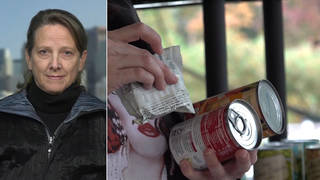
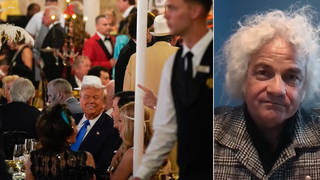
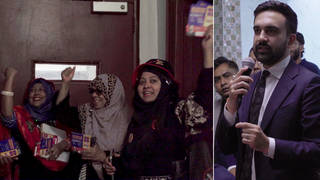
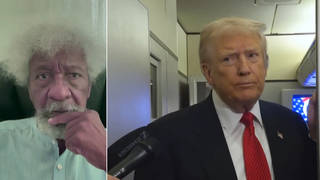





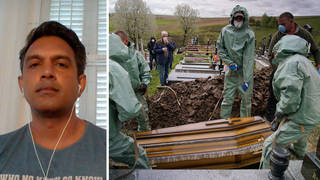
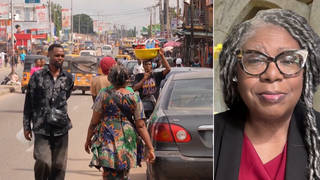
Media Options